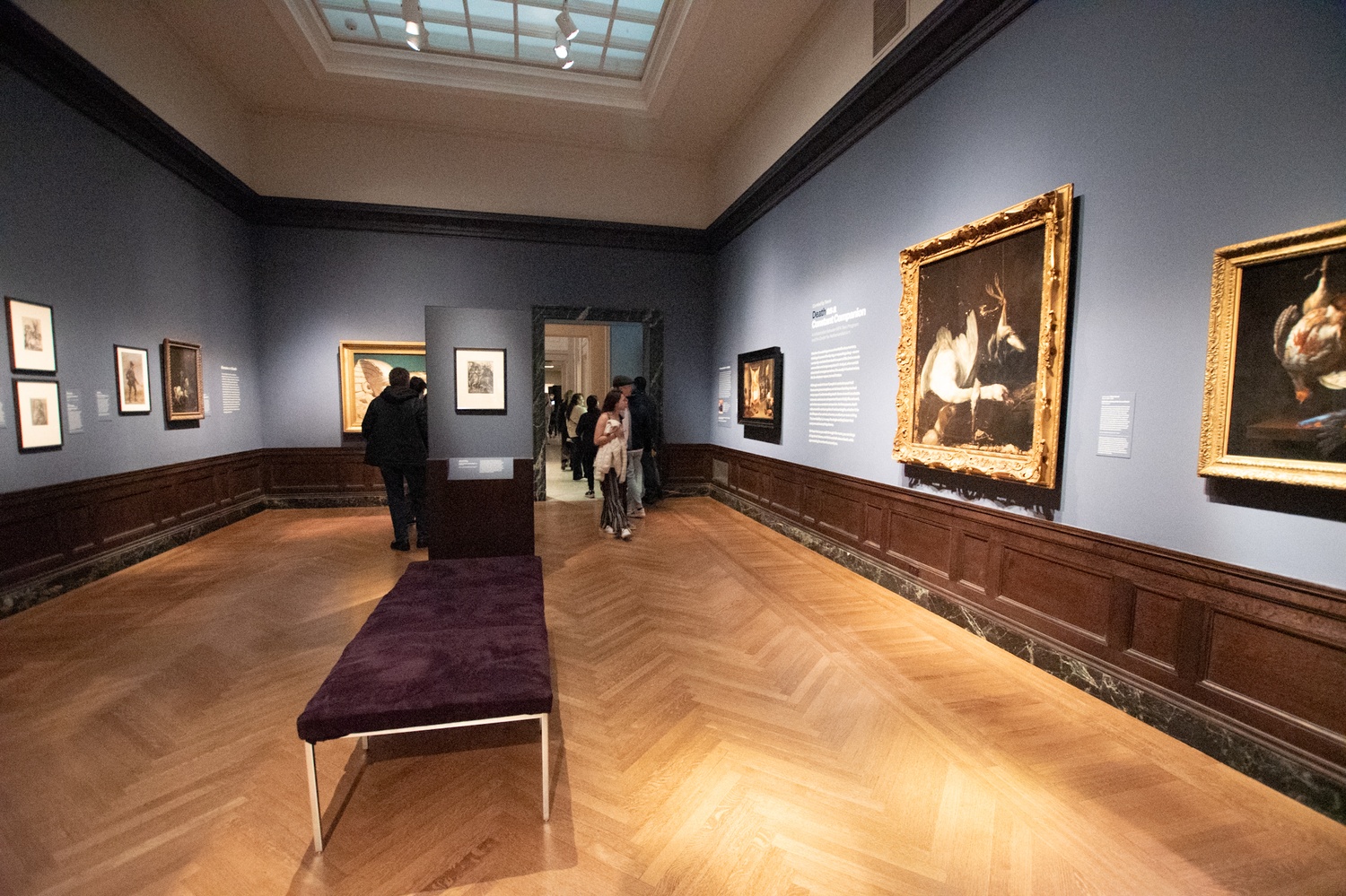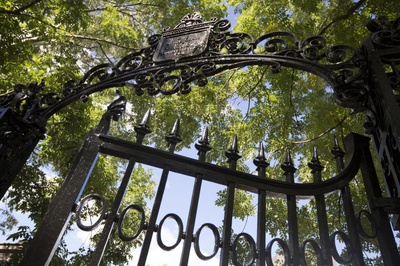
News
Climate Accountability Group Calls On Harvard To Cut Ties with Lobbying Firm Connected To Tesla

News
In Court Filing, Trump Administration Blasts AAUP Lawsuit Against Immigration Orders

News
‘Harvard, We’ve Got Your Back’: Cambridge City Council Cheers On Harvard in Fight Against Trump

News
News Flash: Memory Shop and Anime Zakka to Open in Harvard Square

News
Harvard Researchers Develop AI-Driven Framework To Study Social Interactions, A Step Forward for Autism Research
Memento Mori: Teen-Curated MFA Exhibition Confronts Death Through Art

With an air of mystery and solemnity, the newest exhibition at Boston’s Museum of Fine Arts invites visitors to contemplate mortality through the eyes of young curators. “Curated by Teens: Death as a Constant Companion” was developed by five Boston-area high school students — Robert Cronin (Boston Collegiate Charter School), Rafaela Datel (Brookline High School, now a first-year at Boston University, Alayssa Diaz (Cristo Rey Boston High School), Micah LeBlanc (The English High School), and Nicole Wu (Braintree High School) — in collaboration with the MFA’s Center for Netherlandish Art, exploring artistic representations of death across cultures and centuries.
The teen curators behind “Death as a Constant Companion” made thoughtful choices in selecting artworks that invite viewers to engage in a broad dialogue about mortality. The exhibition successfully explores different facets of death, from its impacts on humans and animals to the role of religion in coping with loss. However, while the artworks themselves are compelling, the organization of the gallery could have been more intentional to create a smoother narrative flow.
As visitors enter gallery 243A and turn to the right, the exhibition begins with a striking display of “Vanitas Still Life” by Cornelis Norbertus Gijsbrechts. Central to the composition is a skull, a universal symbol of mortality, reminding viewers of life’s inevitable end. Adjacent to the skull, an extinguished candle signifies the swift passage of time and the brevity of life. An hourglass further emphasizes this notion, illustrating the relentless flow of time and the fleeting nature of existence.
Continuing down the gallery, viewers come across “Still Life with Dead Partridge and Kingfisher” by Simon Pietersz. Verelst. The painting presents a partridge hanging by its feet, suspended in mid-air by a delicate string, positioned just above a lifeless kingfisher. Nearby, “Still Life with Dead Heron and Swan” by Elias Vonck continues the theme with another striking portrayal of lifeless birds. “The Butcher Shop,” by David Teniers the Younger, a graphic scene of a pig being slaughtered, introduces the idea of human intervention in the cycle of life and death. These initial works immediately confront viewers with death in a stark, physical form.
Following this section, the exhibition transitions to a more philosophical exploration of mortality.
A painting featuring a man and a sphinx head introduces a nearby text on the wall discussing humanity’s reluctance to directly talk about death: “Most humans don’t openly discuss death, and the few times we do, it feels uncomfortable.” This section establishes the exhibition’s intent — to create a space that encourages reflection on death as a transformative experience rather than something to be feared.
The gallery then presents a sequence of eight diverse artworks that depict humanity’s relationship with death. “Knight Vanquishing Time, Death, and Monstrous Demon” by Philips Wouwerman portrays a knight in battle, and an angel shining above him, signifying religious salvation. Here, death is met with faith, reinforcing the belief that while the body may perish, the soul continues in the afterlife. Similarly, “Young Man with a Skull” by Lucas Leyden presents a contemplative young man gazing at a skull, a quiet meditation on life’s impermanence. George Reverdy’s “Allegorical Subject with Death Holding a Globe” takes a more direct approach, personifying Death as a skeletal figure clutching a globe, an ominous reminder of death’s universal power.
This section culminates in “Still Life with Carp” by Pierre Niehen, which, unlike the previous works focusing on human mortality, reintroduces the themes of animal death. The carp, symbolizing Jesus Christ, is depicted as a religious motif rather than a source of sustenance. While thematically rich, its placement at the tail end of a series dominated by human death feels slightly disjointed.
Wall text at this point addresses the connection between animals and death, noting that depictions of dead animals in art are often killed at the hand of humans. Following this, two additional paintings — one featuring a dead partridge and another with two quails and a kingfisher — bring the exhibition to a close.
While the exhibition succeeds in prompting reflection on death, the placement of artworks could have been more cohesive. For instance, the three paintings of animal death at the beginning might have been more effective if positioned after the text discussing animals and death. Likewise, the sequence of seven human-focused works would have felt more unified without the sudden interruption of “Still Life with Carp,” which would have been better placed alongside the other animal death pieces.
Although “Death as a Constant Companion” effectively sparks conversation about mortality, the exhibition does not seek to romanticize death, nor does it dwell in morbidity. Instead, it presents death as an integral, unchanging aspect of the human experience. The teen curators bring a fresh perspective to this age-old subject, using art to explore their understanding of life’s impermanence.
Curated by Teens: Death as a Constant Companion is on view in the William A. Coolidge Gallery at the MFA at Boston through Nov. 30.
Want to keep up with breaking news? Subscribe to our email newsletter.
From Our Advertisers

Over 300+ courses at prestigious colleges and universities in the US and UK are at your disposal.

Where you should have gotten your protein since 1998.

Serve as a proctor for Harvard Summer School (HSS) students, either in the Secondary School Program (SSP), General Program (GP), or Pre-College Program.

With an increasingly competitive Law School admissions process, it's important to understand what makes an applicant stand out.

Welcome to your one-stop gifting destination for men and women—it's like your neighborhood holiday shop, but way cooler.

HUSL seeks to create and empower a community of students who are seeking pathways into the Sports Business Industry.
